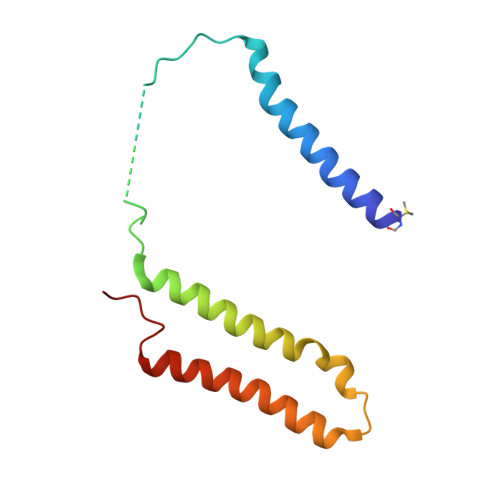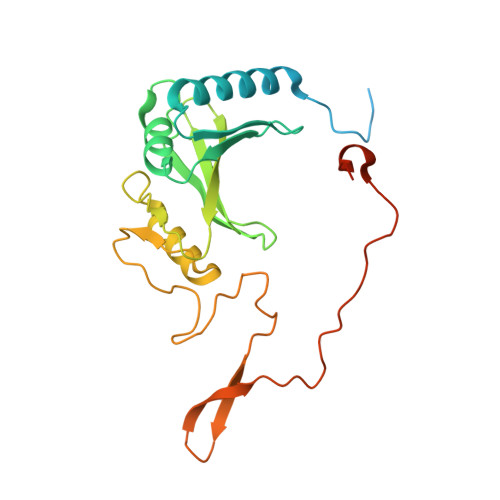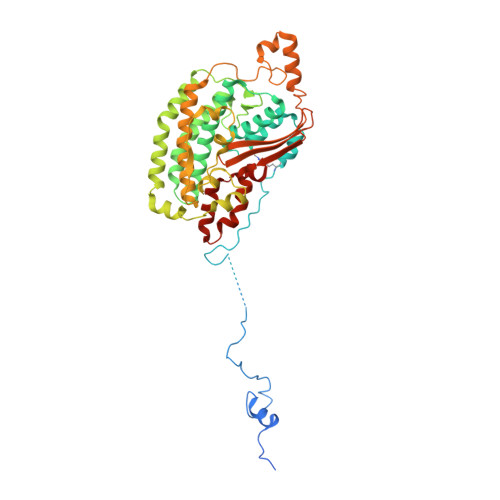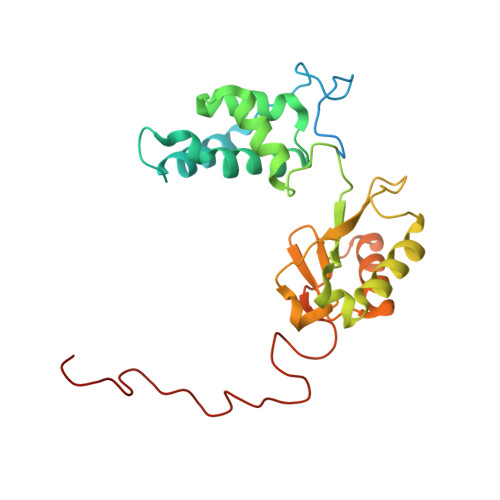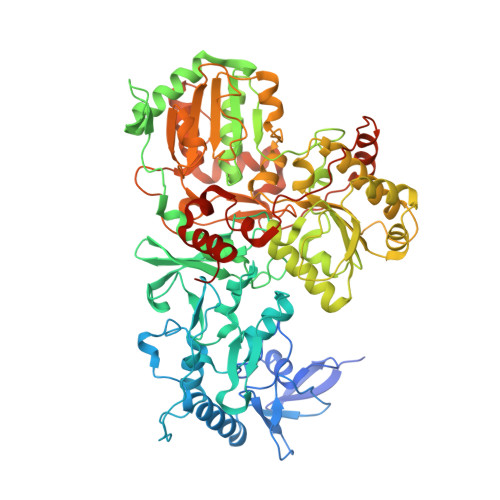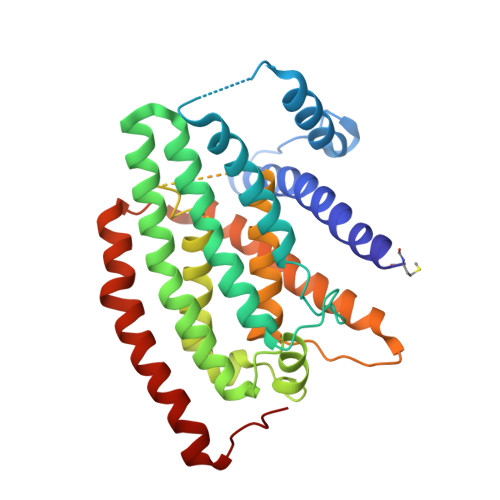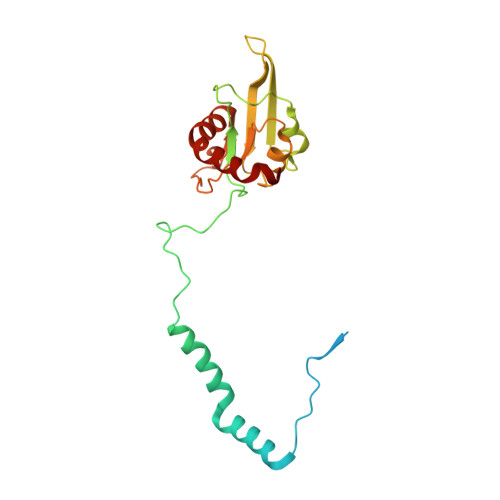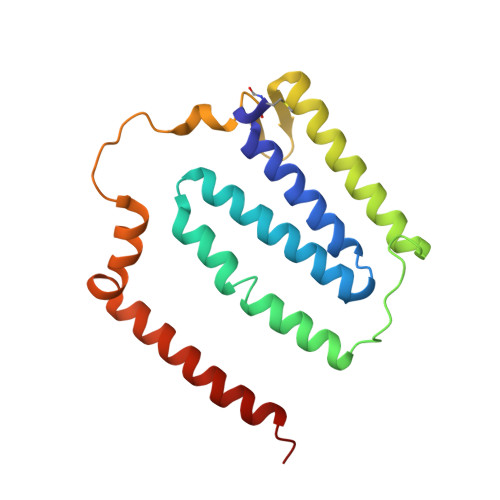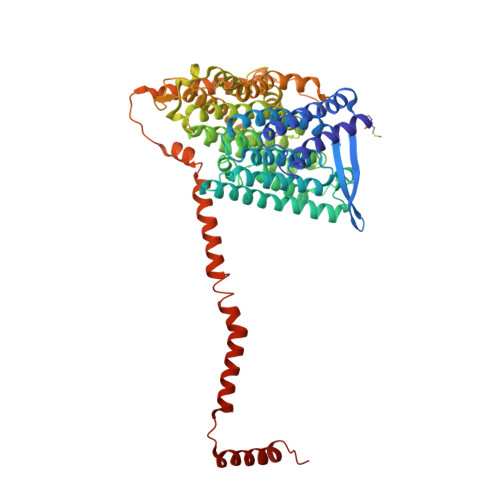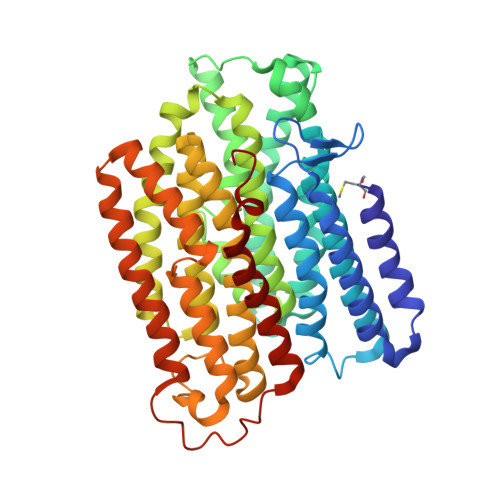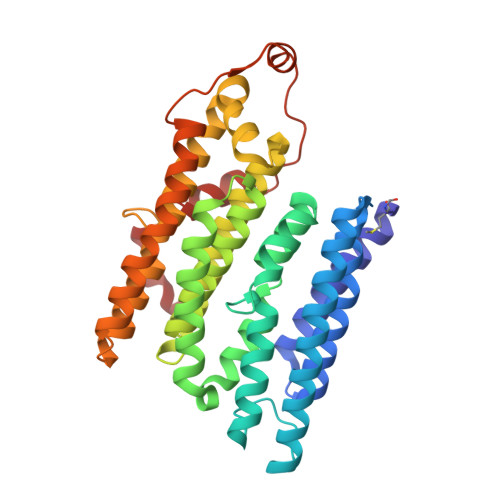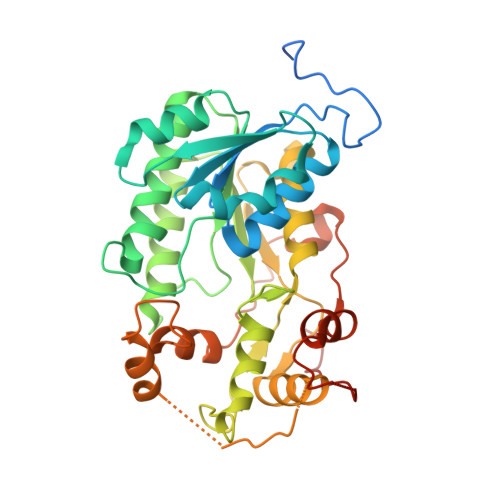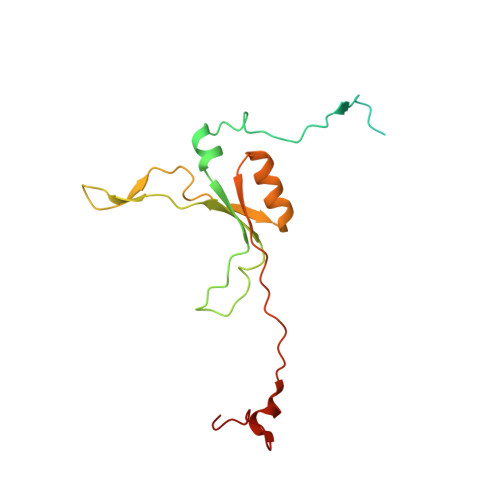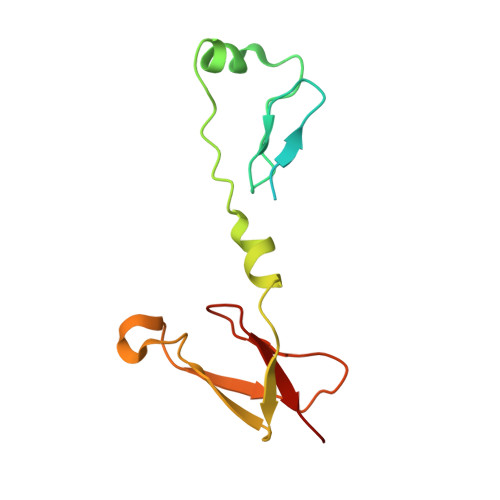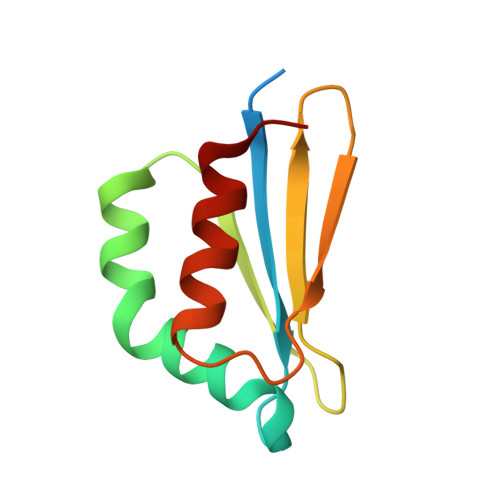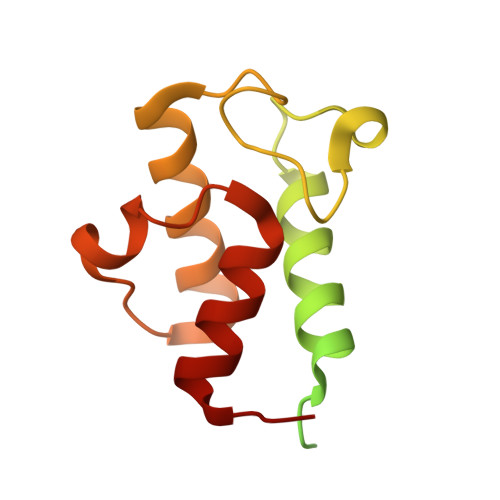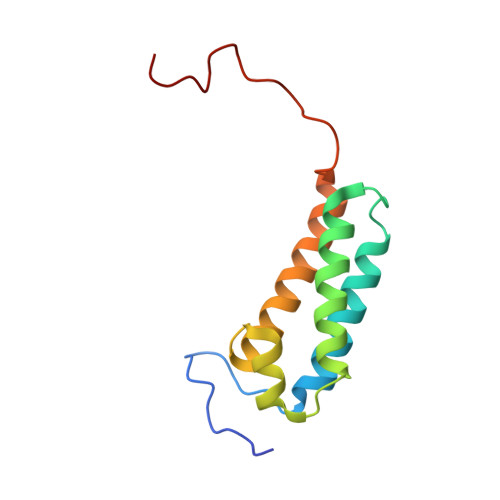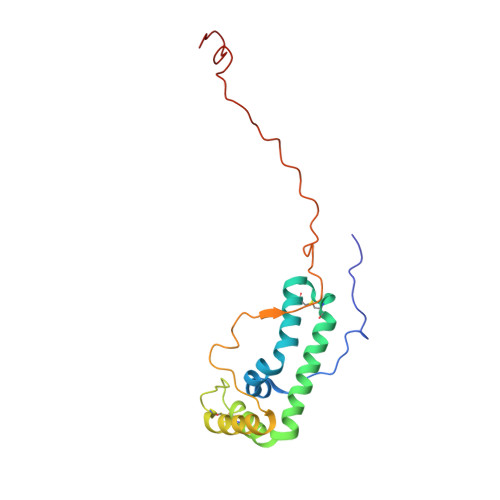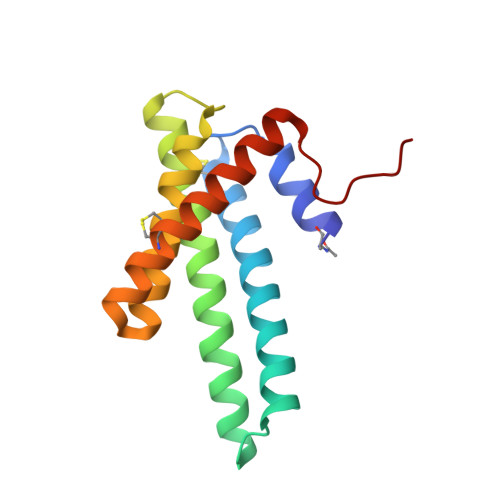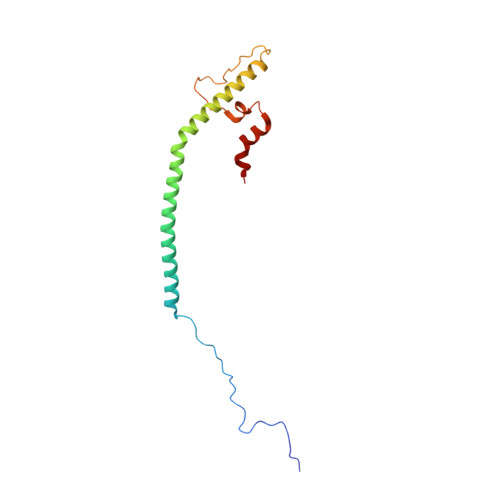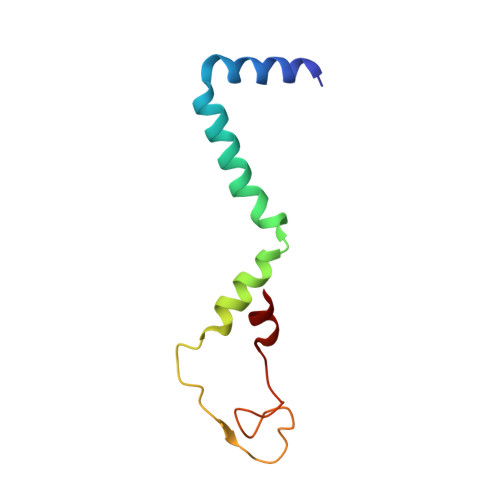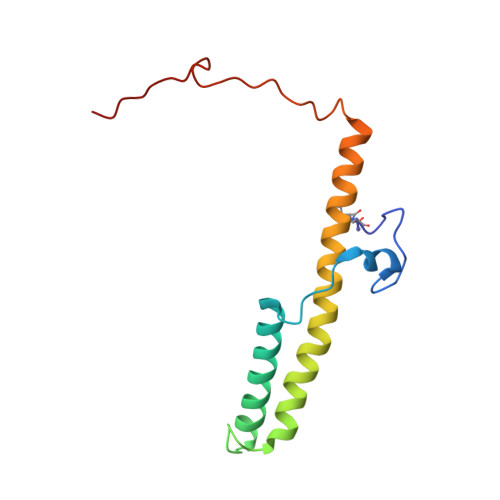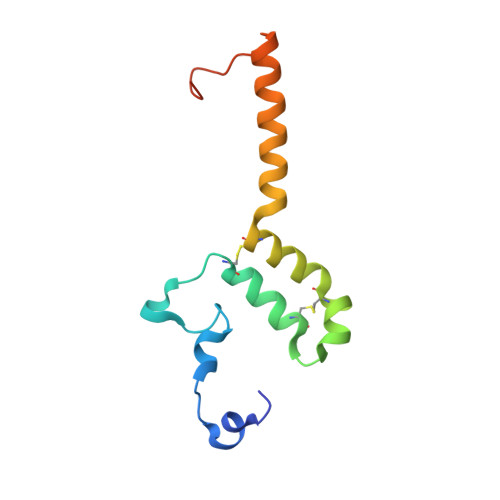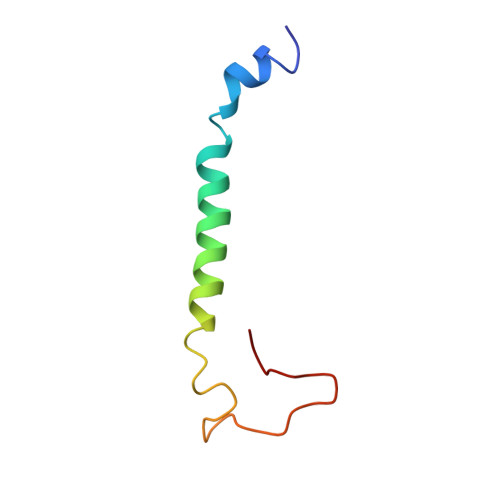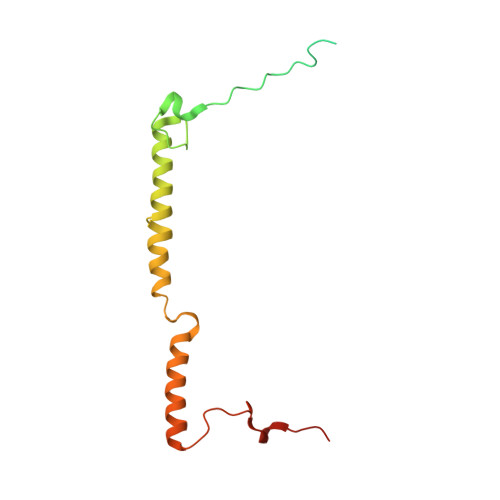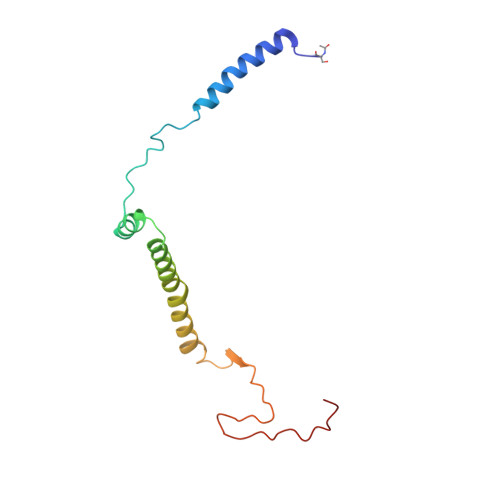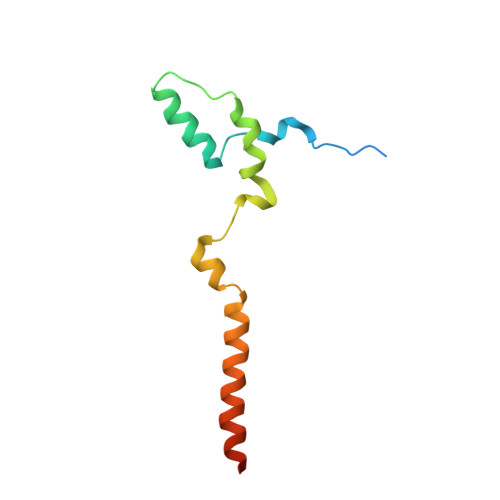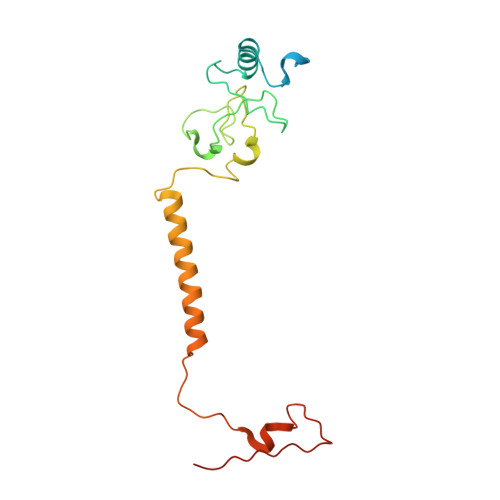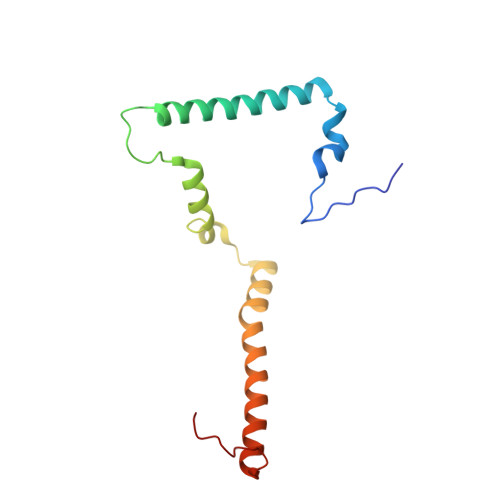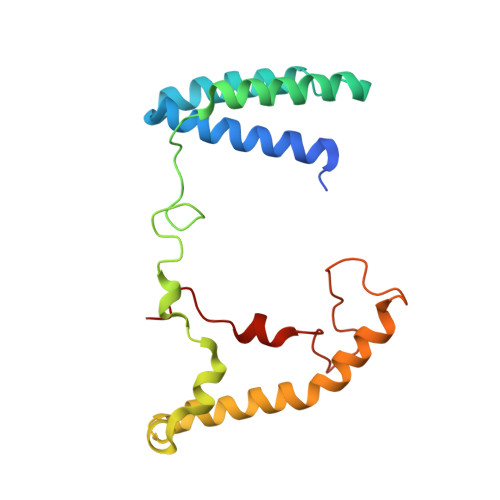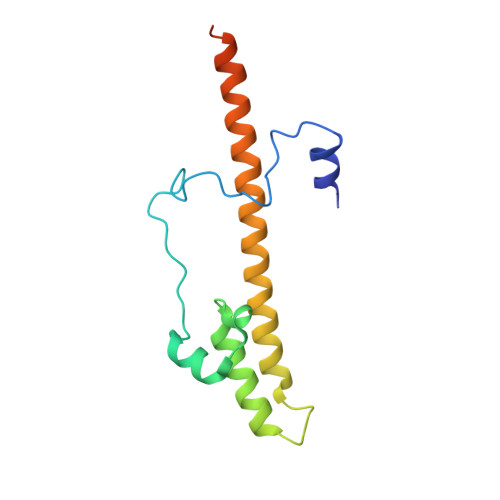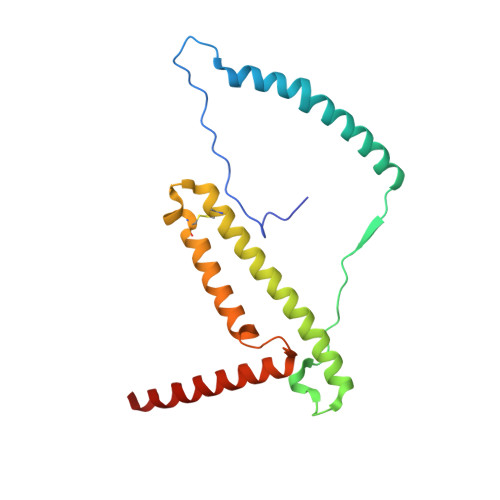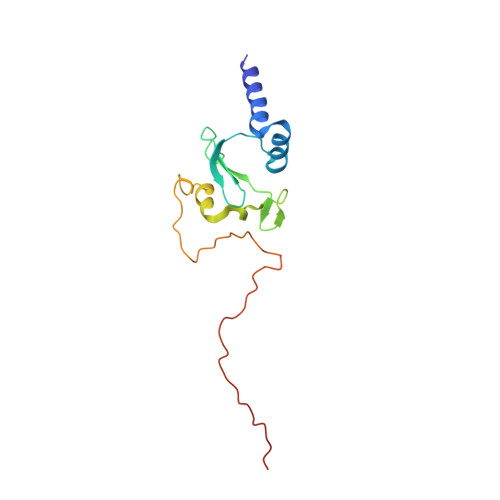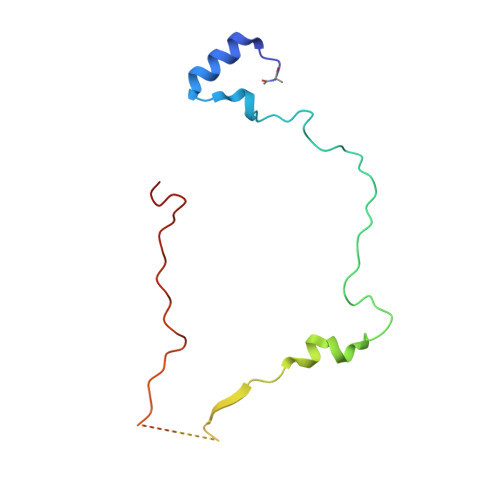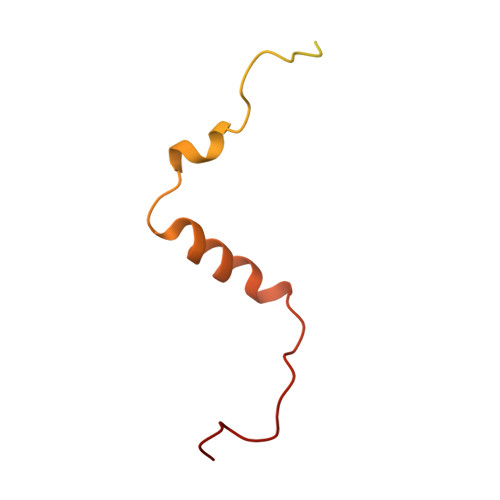Cryo-EM structures define ubiquinone-10 binding to mitochondrial complex I and conformational transitions accompanying Q-site occupancy.
Chung, I., Wright, J.J., Bridges, H.R., Ivanov, B.S., Biner, O., Pereira, C.S., Arantes, G.M., Hirst, J.(2022) Nat Commun 13: 2758-2758
- PubMed: 35589726
- DOI: https://doi.org/10.1038/s41467-022-30506-1
- Primary Citation of Related Structures:
7QSK, 7QSL, 7QSM, 7QSN, 7QSO - PubMed Abstract:
Mitochondrial complex I is a central metabolic enzyme that uses the reducing potential of NADH to reduce ubiquinone-10 (Q 10 ) and drive four protons across the inner mitochondrial membrane, powering oxidative phosphorylation. Although many complex I structures are now available, the mechanisms of Q 10 reduction and energy transduction remain controversial. Here, we reconstitute mammalian complex I into phospholipid nanodiscs with exogenous Q 10 . Using cryo-EM, we reveal a Q 10 molecule occupying the full length of the Q-binding site in the 'active' (ready-to-go) resting state together with a matching substrate-free structure, and apply molecular dynamics simulations to propose how the charge states of key residues influence the Q 10 binding pose. By comparing ligand-bound and ligand-free forms of the 'deactive' resting state (that require reactivating to catalyse), we begin to define how substrate binding restructures the deactive Q-binding site, providing insights into its physiological and mechanistic relevance.
- MRC Mitochondrial Biology Unit, University of Cambridge, The Keith Peters Building, Cambridge Biomedical Campus, Hills Road, Cambridge, CB2 0XY, UK.
Organizational Affiliation:








